我国自然保护地用途管制的现状特征、问题与建议(全文可下载)
我国自然保护地用途管制的现状特征、问题与建议
Current Characteristics, Problems and Suggestions for the Use Control of Protected Areas in China
撰文
李可心/LI Kexin
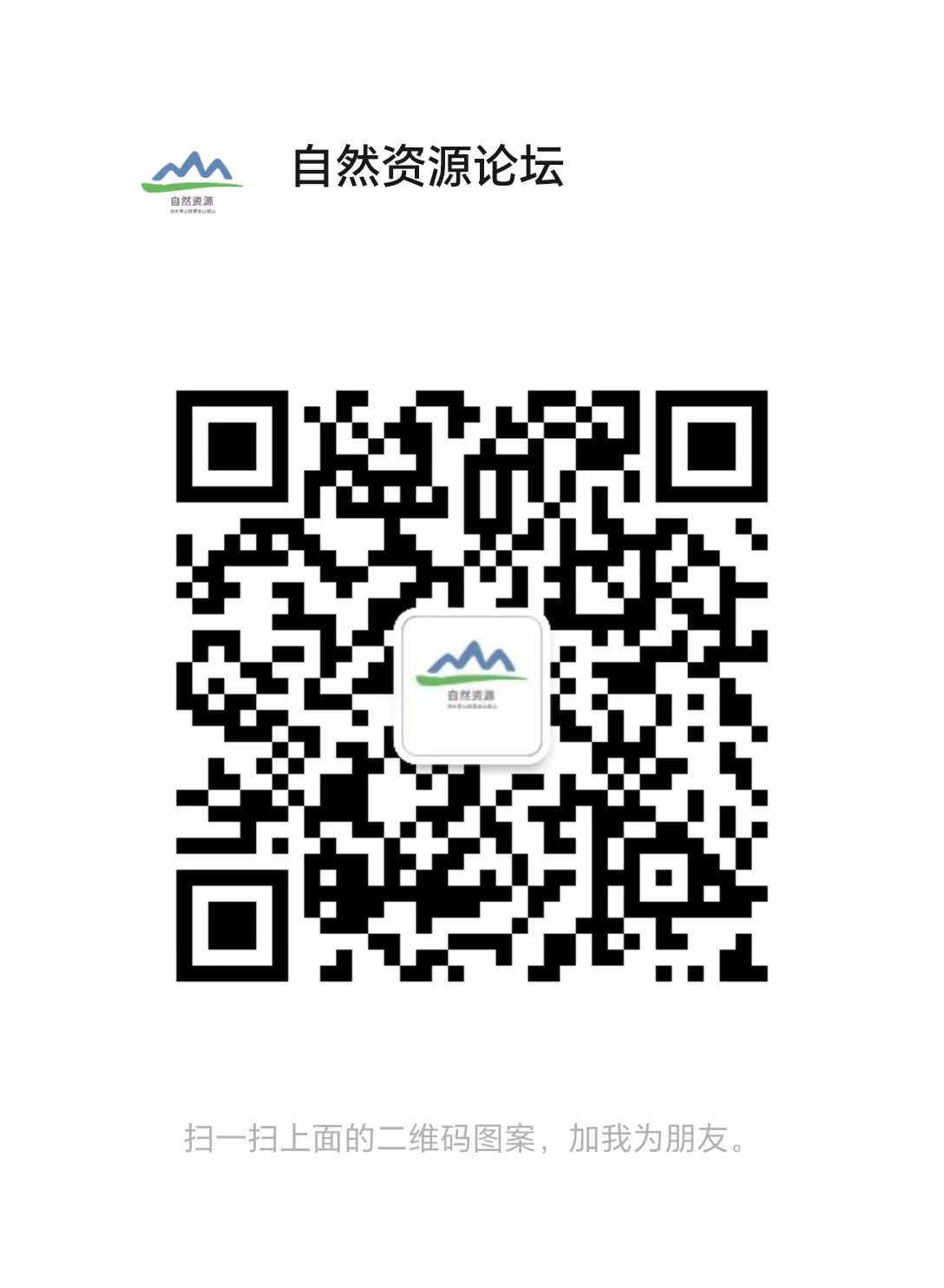
更多资料,添加微信
复制微信号
清华大学建筑学院景观学系在读博士研究生/工程师,注册城乡规划师
庄优波* /ZHUANG Youbo
清华大学建筑学院景观学系副系主任,副教授,博士生导师/本刊特约编辑
宋松松/SONG Songsong
浙江省林业局自然保护地管理处二级主任科员
全文刊登于《中国园林》2024-12期 P6-14
引文格式:李可心,庄优波,宋松松.我国自然保护地用途管制的现状特征、问题与建议[J].中国园林,2024,40(12):6-14.
摘要
采用定性与定量相结合的文本内容分析方法,明晰中国自然保护地用途管制的现状特征、问题,并探究其系统性、框架性的完善对策。将现行用途管制规定概括为“顶层设计”“传导衔接”“管制规则”“实施监管”四方面。经发掘提出当前存在的四大问题:用途管制顶层设计不全面不系统、国土空间与自然保护地传导衔接笼统粗放、空间准入管制规则不统一不适应、实施监管流程复杂且部门协同不足。进而针对性提出顶层设计“体系化”、传导衔接“精确化”、管制规则“科学化”与实施监管“高效化”的建议,以期为我国自然保护地的可持续保护与利用以及国土空间开发保护制度的建立提供参考。
关键词
风景园林;自然保护地;用途管制;国土空间;规划
Abstract
This paper adopts a combined method of qualitative and quantitative text content analysis to clarify the current characteristics, problems and to explore framework-oriented and systematic strategies for the use control of protected areas in China. The related regulations are summarized into four aspects, namely, the top-level design, the transmission and connection, the rules of control, and the implementation and supervision. Four major problems have been identified: the top-level design for use control is not comprehensive or systematic; the transmission and connection between territorial space and protected areas are vague and primitive; the rules for spatial permission are neither standardized nor well-adapted; and the implementation and supervision processes are complex and lack coordination. It also puts forward problem-oriented suggestions: systematization of top-level design, precision in transmission and connection, scientific analysis of use control rules, enhancement of efficiency in implementation and supervision. This paper aims to provide a reference for improving the conservation and sustainable utilization of protected areas and the system for developing and protecting territorial spatce.
Keywords
landscape architecture; protected area; use control; territorial space; planning
“国土空间用途管制”是按照国土空间规划对国土空间的保护、开发和利用活动核发行政许可、进行行政审批等。自然保护地是国土空间中生态空间、生态保护红线的关键构成。在我国加快建立健全国土空间用途管制制度的进程中,明确对自然保护地实行“特殊保护制度”。
目前,自然保护地用途管制依据分散设置,“特殊保护制度”尚未系统性建立。已有研究聚焦于某一管制环节或特殊背景下的某一问题,框架性研究匮乏。在自然保护地体系与国土空间用途管制制度建立的初期,明晰自然保护地用途管制的现状特征及问题并探究其系统性框架性完善对策,具有重要意义。
01
自然保护地用途管制规定的
现状特征
为分析我国现行自然保护地用途管制规定组成与特征,通过政府网站检索、筛选涉及相关规定的制度文件共82份。将文件属性分为法律法规、部门规章与规范标准,类型分为国土空间与自然资源、自然保护地2个大类(图1)。运用“扎根理论方法”和Nvivo质性分析软件对条文进行迭代编码。最终提取626个条文和4级编码。
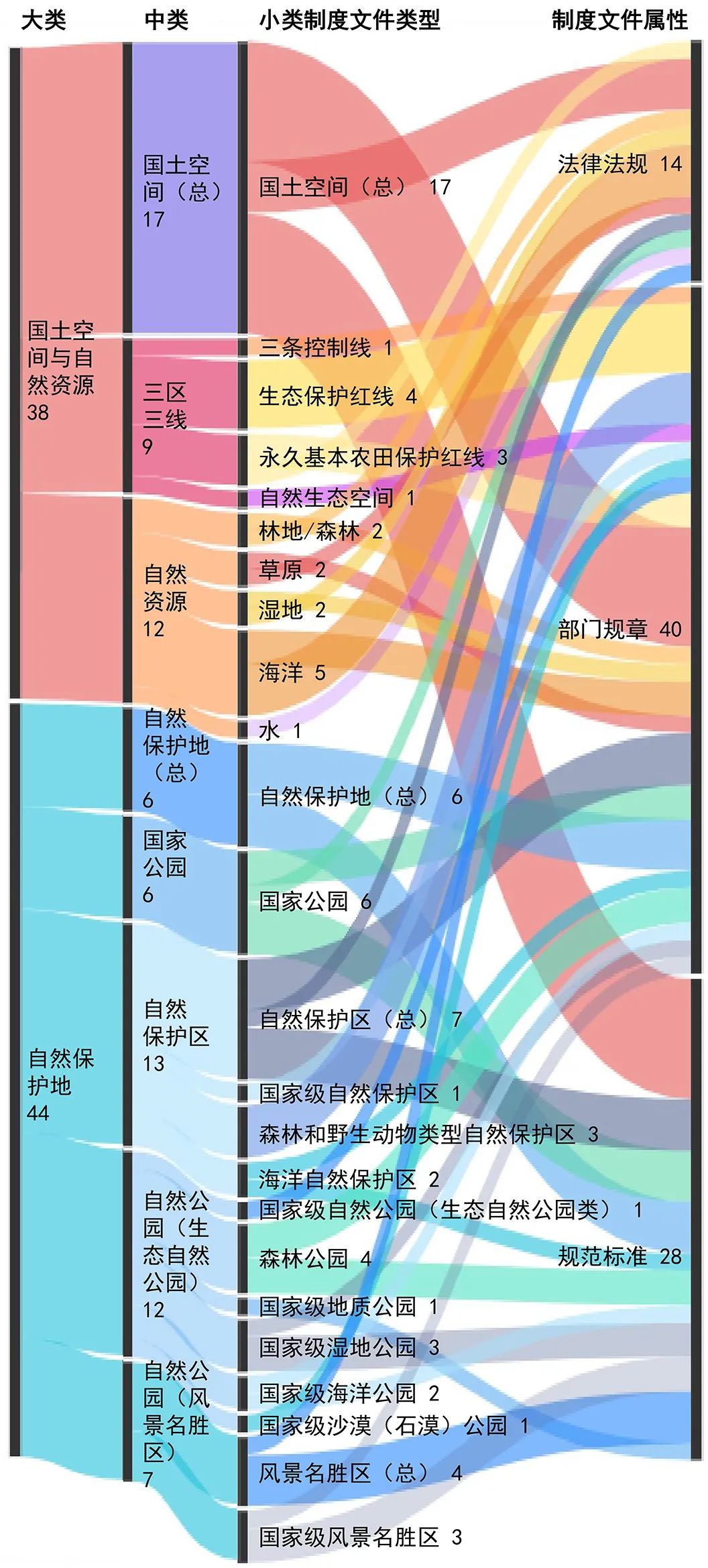
图1 制度文件类型与制度文件属性数量分析(单位:个)
就内容特征而言,现行规定围绕“顶层设计”“传导衔接”“管制规则”“实施监管”展开。“顶层设计”是对管制依据与方式的阐述,“传导衔接”是对双层管制体系下特殊组织形式的阐述,二者共同构成管制的底层思维。“管制规则”是依托于规划与制度,在时间与空间上的具体用途管制要求,“实施监管”是由行政部门与管理机构主导,保障用途管制有效落地的管理办法,二者共同构成从宏观到微观5个管控层次与环节(图2)。
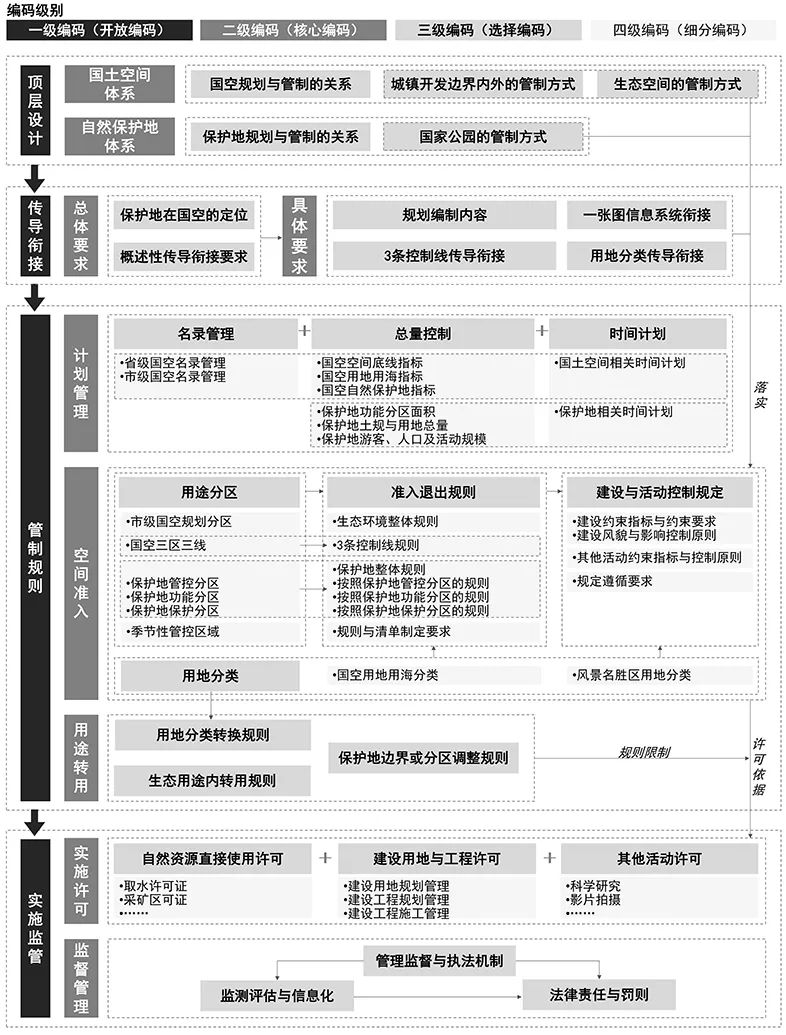
图2 自然保护地用途管制规定组成
就数量特征而言,现行规定以部门规章为主体,一、二级编码分别以“管制规则”和“空间准入”规则为主体,三级编码中“准入退出规则”和“建设用地与工程许可规定”数量突出,体现了管制的主要规则与落脚点(图3)。
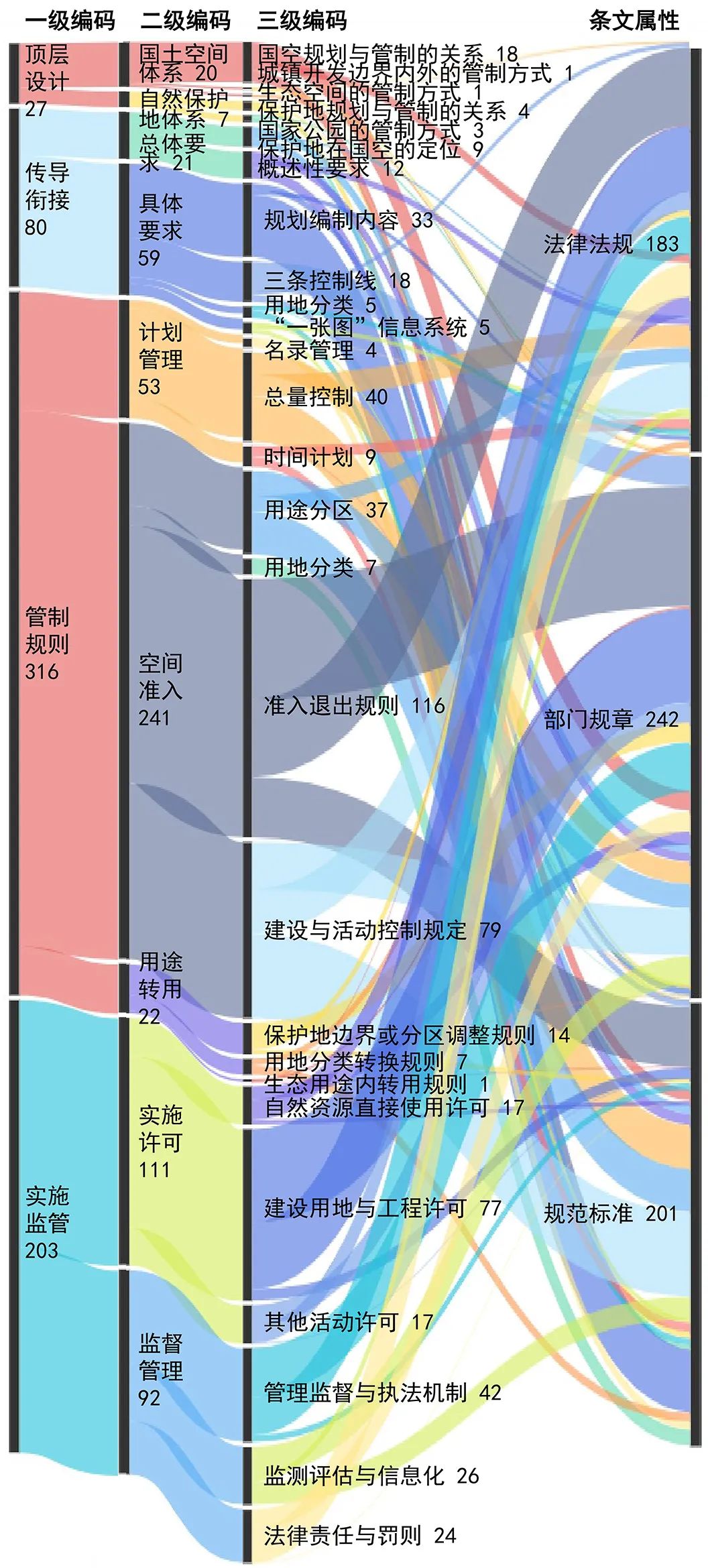
图3 各级编码与条文属性数量分析(单位:个)
02
自然保护地用途管制的
现状问题
为进一步发掘、剖析现状问题,依据《2023年自然保护地保护管理年度报告汇编》和自然保护地管制、管控、土地管理相关研究文献,提取其中与用途管制有关的挑战和不足的文本。分析其原因并对应至现行规定组成中。
根据年度报告汇编,自然保护地“顶层设计”问题最为突出,文本数占比过半,其次为“监督管理”问题。根据相关研究文献,“空间准入”的管制规则问题为讨论热点,其次为“传导衔接”(图4)。
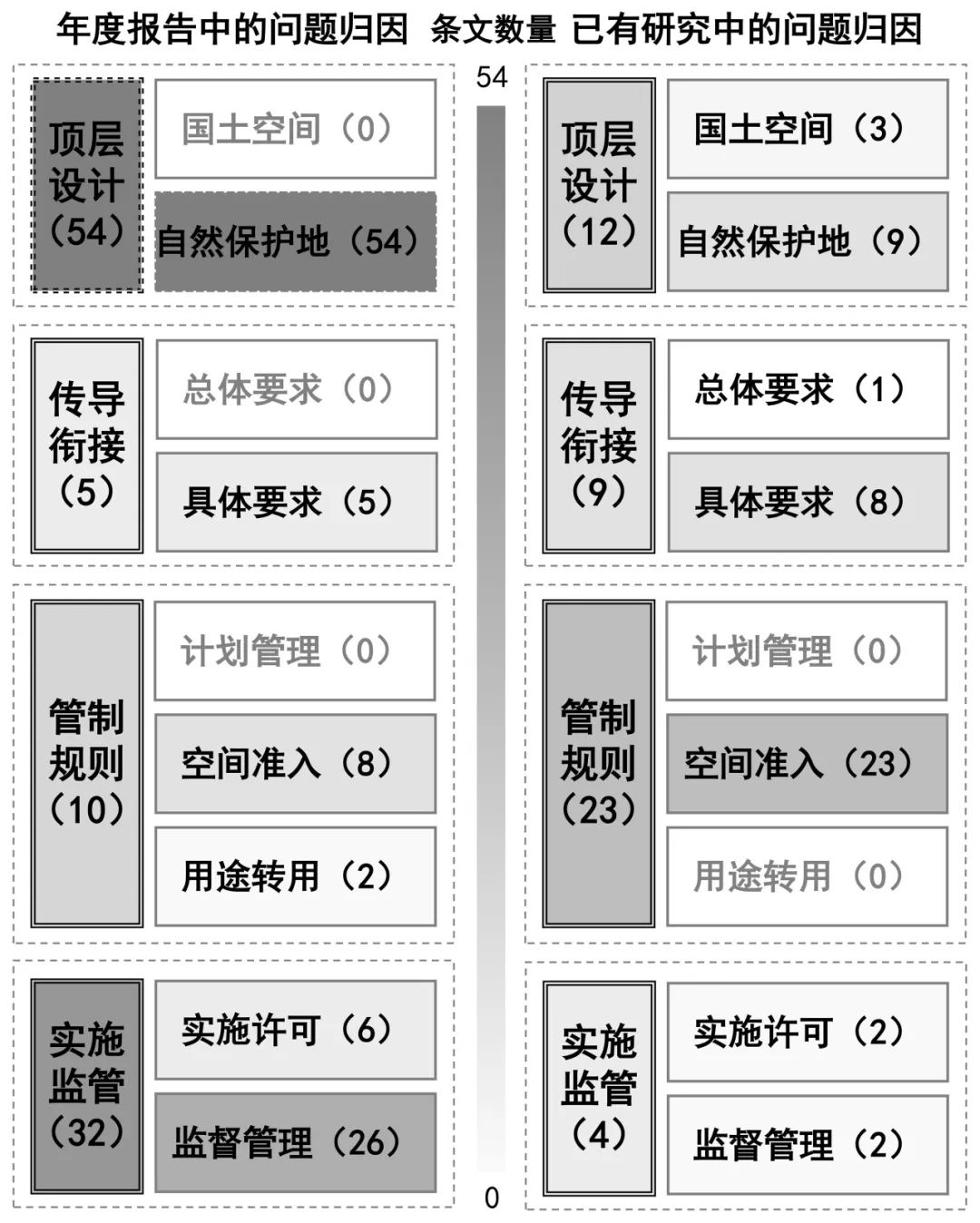
图4 年度报告与已有研究中的问题归因(单位:个)
现状问题总体可概括为四方面:
(1)自然保护地用途管制顶层设计不全面不系统
各类自然保护地的管制规定效力差异较大,且部分条文无法适应新时期管理需要。全类型自然保护地的制度体系尚未建立。
从计划管理到监督管理5个环节的关系尚未明确。管制环节与各级各类保护地规划的对应关系和要求也较为模糊。全流程、全尺度的管制框架尚未形成。
在保护与发展矛盾突出的自然保护地区域,落地实施保障常无法满足民生与地方发展的合理诉求,导致管制措施和目标难以实现。
(2)国土空间与自然保护地传导衔接笼统粗放
国土空间规划规范标准和自然保护地制度已提出了多方面传导和衔接要求。但各级规划传导衔接的具体内容与方法仍未有明确规定。
保护地内三条控制线的协调和准入退出要求相对笼统,不利于生态与文化的精细化、完整性保护。风景名胜区与国土空间的用地分类逻辑区别明显,用地传导存在隔阂。传导衔接的管制规则较为粗放。
(3)空间准入管制规则不统一不适应
自然保护地的管控分区分为“一般控制区”“核心保护区”,缺乏细分。各类保护地的功能分区划分标准不同。风景名胜区、自然公园将保护分区与功能分区并用,两种管制规则偶尔存在矛盾。
空间准入的具体规定涉及准入退出规则、建设与活动控制规定,以及人为活动、设施建设与产业项目。目前规定高度分散且缺乏创新性。在新时期新要求下,难以为高质量保护管理提供坚实依据。
(4)实施监管流程复杂且协同不足
自然保护地用途管制的实施涉及多项审批内容、多个审批主体,民生基础设施、生态旅游项目常因实施许可流程的复杂受到阻碍。
市县林业部门与环保部门协同不足,出现执法空档。自然保护地管理机构通常最先发现违法违规问题,但因不掌握执法权,处置的时效性减弱。
03
自然保护地用途管制的
对策建议
(1)顶层设计“体系化”
建立统一的用途管制制度体系,构建全流程、全尺度的管制框架(图5),优化跨部门管理体制。
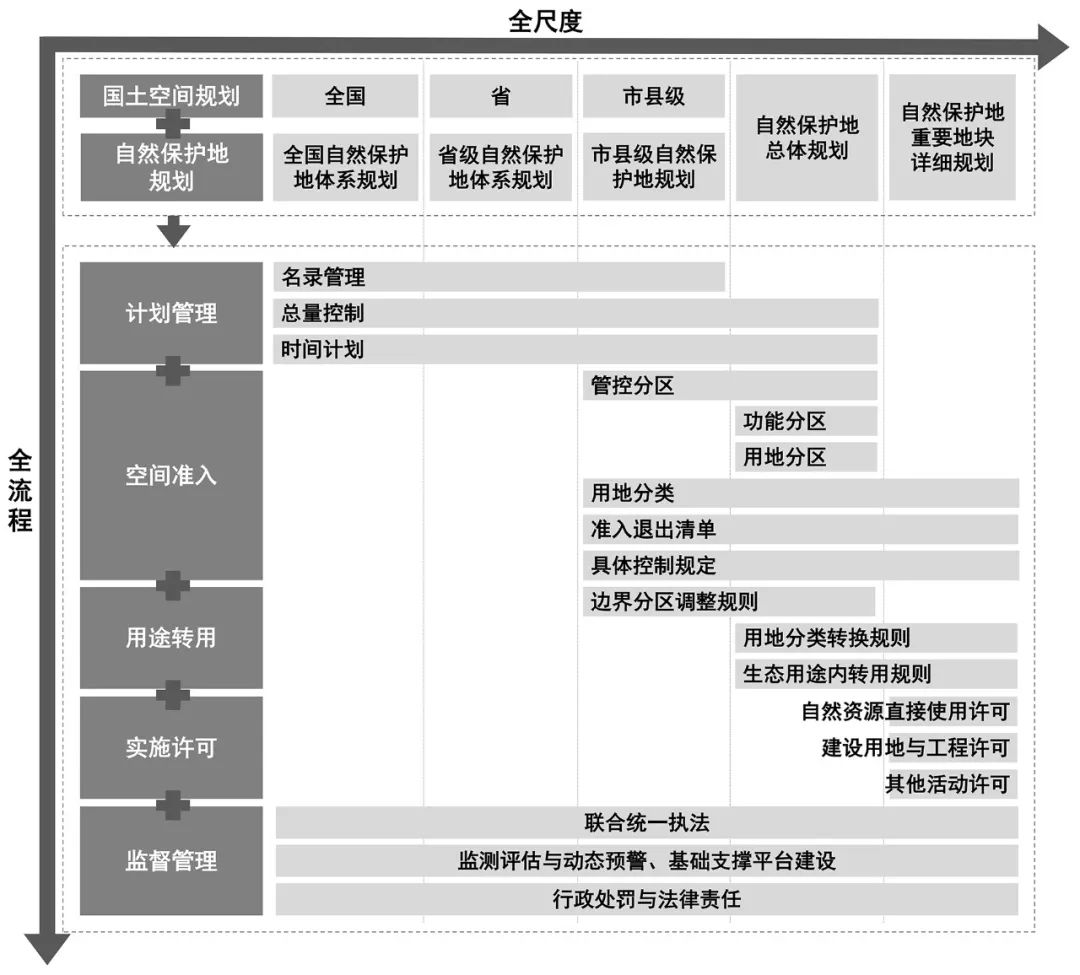
图5 自然保护地用途管制框架
(2)传导衔接“精确化”
明晰内容要求,细化管制规则。
(3)管制规则“科学化”
统一用途分区方法与标准,集成、创新空间准入规定。
(4)实施监管“高效化”
探索优化实施许可流程,完善联合执法与监管机制。
1 Background
"Territorial spatial use control" involves the issuance of administrative licenses and approvals for the protection, development and utilization of territorial space based on territorial spatial planning. Protected areas are key components of the Ecological Spaces and the Ecological Protection Red Line Areas. The implementation of "a special protection system" for protected areas has been clearly proposed in the context of developing a comprehensive territorial spatial use control system.
Currently, the use control of protected areas is based on dispersed regulations and lacks a systematic "special protection system". Existing research focuses on certain links or specific issues under special circumstances and lacks framework research. In the initial stage of establishing China's protected area system and territorial spatial use control system, it is crucial to clarify the current situation and explore framework-oriented and systematic strategies for the use control of protected areas.
2 Current Characteristics of the Use Control of Protected Areas
To analyze the composition and current characteristics of China's existing regulations on the use control of protected areas, 82 relevant documents were selected by searching for institutional documents on government websites. The documents include laws, regulations, norms and standards, which can be divided into two major categories: "territorial space and natural resources" and "protected areas". The Grounded Theory and NVIVO qualitative analysis software are used to code the provisions iteratively. A total of 626 provisions were extracted and summarized into 4 levels of codes.
In terms of content characteristics, current regulations center on four primary domains. "Top-level design" describes the fundamental basis and methods of control, while "Transmission and Connection" describes the organizational forms under the double-layer control system. Together, they form the underlying thinking of use control. "Rules of Use Control" represents specific control requirements in time and space, based on planning and systems, while "implementation and supervision" is managed by administrative departments and management agencies to guarantee the efficacious implementation of use control. Together, they comprise five control levels and links from macro to micro.
In terms of quantitative characteristics, the provisions are mainly departmental regulations. The first-level and second-level codes are mainly composed of "Rules of Use Control" and "Spatial Access". In the third-level codes, "Access and Exit Rules" and "Regulations on Construction Land and Project License" are prominent, reflecting the primary rules and focal points in the control process.
3 Current Problems of the Use Control of Protected Areas
To identify and analyze problems at various levels and links, texts related to the challenges and deficiencies in use control were extracted based on the "2023 Annual Report Compilation of Protected Area Protection and Management" and relevant research on use control and land management of protected areas. The reasons were analyzed and attributed to the composition of existing regulations to clarify the control levels where problems exist and analyze the specific issues.
As indicated in the local annual reports, the "Top-level Design" issues of protected areas represent the most significant challenges, comprising over half of the total text, followed by "Implementation and Supervision" issues. As indicated in relevant research, the control rule of "Spatial Access" is a hot topic, followed by "Transmission and Connection". Overall, the problems can be summarized into 4 aspects.
3.1 The top-level design for use control is not comprehensive or systematic
The efficacy of use control regulations for each type of protected area exhibits variability, and some provisions no longer fulfill the management requirements of the contemporary era under the new system. An institutional system for all types of protected areas has yet to be established.
The relationships between the 5 levels and links, from planning management to supervision, have not been fully clarified. Furthermore, it remains unclear what the interrelationships and requirements are between control links and protected area planning at various levels and types. A control framework for the entire process and all scales has yet to be formed.
Presently, the level of implementation guarantee is insufficient in protected areas where the contradiction between protection and development is salient. It fails to meet the reasonable demands of livelihood and local development, and leads to difficulty in achieving control measures and objectives.
3.2 The transmission and connection between territorial space and protected areas are primitive and vague
The standards for territorial spatial planning and the regulations of protected area systems have proposed various requirements for transmission and connection. Nevertheless, the content and methodologies of transmission and connection remain unclearly specified at various planning levels.
The rules of coordination, access and exit for the three control lines within protected areas are relatively general, which is not conducive to the refined and comprehensive protection of the ecosystem and culture. Besides, there is a logical difference in the land use classifications between scenic areas and territorial space, with a gap in the transmission of land use planning.
3.3 The rules of use control for spatial access are neither standardized nor well-adapted
Control Zoning is divided into "general control area" and "core protected area", and lacks more detailed classification. Functional Zoning criteria are different in each type of protected area. Protection Zoning and Functional Zoning are both implemented in Scenic Areas and Natural Parks, and their rules are occasionally inconsistent.
The specific regulations for spatial access focus on access and exit as well as construction and activity, involving human activities, facility construction and industrial projects. Presently, the regulations are highly dispersed and not innovative enough. Under the evolving requirements of the contemporary era, it is challenging to provide a firm foundation for high-quality protection and management.
3.4 The implementation and supervision processes are complex and lack coordination
The control implementation of protected areas involves many approval contents and multiple authorities. Livelihood infrastructure and ecotourism projects are often hindered by the complicated licensing procedure.
The cooperation between the municipal and county forestry department and the environmental protection department is inadequate, which leads to incomplete coverage of enforcement. The management agencies usually identify instances of illegality and irregularity first, however, due to the absence of law enforcement authority, the timeliness of disposal is diminished.
4 Suggestions for the Use Control of Protected Areas
4.1 Systematization of top-level design
Establishing a unified institutional system of use control. It is recommended to accelerate the formulation of laws on territorial space and protected areas, issue relevant regulations and revise existing systems. Besides, the ecological compensation mechanism and the methods for enterprise exit and industry support should be optimized to promote the long-term implementation of control.
Developing a control framework for the entire process and all scales. Based on the planning system of territorial space and protected areas, the use control framework of "planning management, spatial access, use conversion, implementation licensing, supervision and management" should be established. It is proposed to gradually decompose and implement target requirements, refine zoning control, formulate applicable conversion rules and administrative procedures, and provide supervision and management throughout the entire process.
Optimizing the interdepartmental management system. It is recommended to clarify the rights and responsibilities of different departments at different levels, and to establish inter-departmental cooperation mechanisms at the provincial, township and county levels.
4.2 Precision in transmission and connection
Clarifying the content requirements. It is proposed to take territorial spatial planning as the basic foundation and protected area planning as the high-standard and specialized basis, and to append the content of transmission and connection within the planning requirements at all levels.
Refining the rules of use control. It is recommended that protected areas follow a unique system and focus on improving the spatial access regulations on the internal three control lines. Furthermore, it is recommended that the current land use classification standard for scenic areas be abolished. Instead, the term "land use area" is proposed as the core control unit to facilitate comprehensive management needs and promote precise implementation.
4.3 Scientification of control rules
Unifying use zoning modes and standards. It is recommended to define a control hierarchy for protected areas, comprising "control zoning, functional zoning, land use area, land-sea use classification", and explore the formulation of a standardized functional zoning mode and methods for the transition between new and old zoning, in order to resolve the issues from rough zoning and conflicting rules.
Integrating and innovating spatial access regulations. It is necessary to develop provincial and municipal protected area access and exit lists and to create a "spatial access regulations table" for each protected area. In addition, it is proposed to integrate new technologies to supplement spatial rules, such as climate change adaptability arguments and habitat connectivity enhancement.
4.4 Enhancement of efficiency in implementation and supervision
Exploring and optimizing the implementation licensing procedure, including an integrated licensing procedure for natural resource element occupation and use.
Improving joint law enforcement and supervision mechanisms. It is proposed to strengthen the collaboration of supervision and law enforcement between ecological environment departments and forestry departments, explore the granting of law enforcement rights to management agencies of national parks and reserves, and promote the joint construction of relevant platforms for territorial space and protected areas.
Translator / LI Kexin
注:文中图片均由作者绘制。
致谢:感谢硕士生王京川在资料收集阶段提供的帮助。




